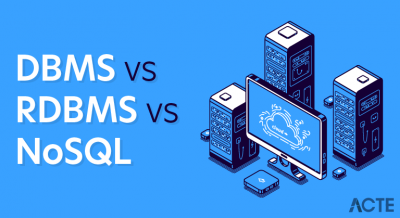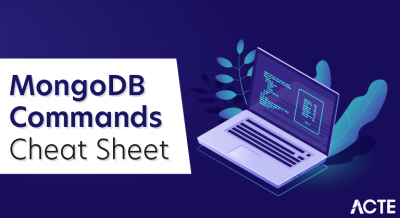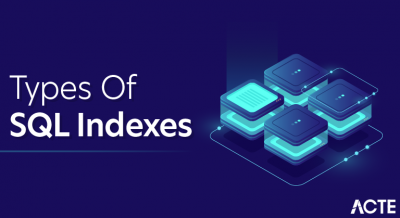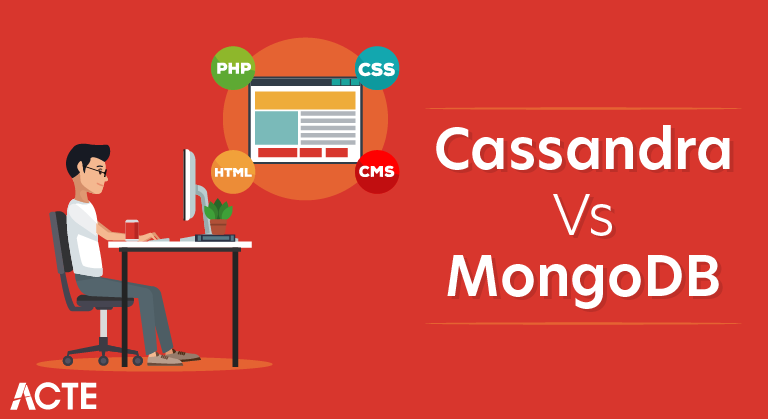
Cassandra and MongoDB are both “NoSQL” databases, but the reality is that they are very different. They have very different strengths and value propositions – so any comparison has to be a nuanced one. Let’s start with initial requirements… Neither of these databases replaces RDBMS, nor are they “ACID” databases. So If you have a transactional workload where normalization and consistency are the primary requirements, neither of these databases will work for you. You are better off sticking with traditional relational databases like MySQL, PostgreSQL, Oracle, etc. Now that we have relational databases out of the way, let’s consider the major differences between Cassandra and MongoDB that will help you make the decision. In this post, I am not going to discuss specific features but will point out some high-level strategic differences to help you make your choice.
Data Availability
One of the most significant differences between MongoDB and Cassandra is their strategy concerning data availability. This feature dependents on the number of master slaves in a cluster.
MongoDB has a single master directing multiple slave nodes. If the master node goes down, one of the slave nodes takes over its role. Although the strategy of automatic failover does ensure recovery, it may take up to a minute for the slave to become the master. During this time, the database isn’t able to respond to requests.
Cassandra, on the other hand, uses a different model. Instead of having one master node, it utilizes multiple masters inside a cluster. With multiple masters present, there is no fear of any downtime. The redundant model ensures high availability at all times.
Conclusion: If your application requires high availability and depends on instant request responses, Cassandra is the more suitable option. Still, make sure you have the server resources to facilitate such a setup. If a 30-40 second delay doesn’t affect your business, there is no need to prioritize high availability and burden the system with additional infrastructure.
Scalability
Scalability is a feature directly linked to the cluster model. Hence, Cassandra and MongoDB have significant differences between their writing scalabilities.
Only the master node can write and accept input. In the meantime, the slave nodes are only used for reads. Accordingly, as MongoDB has a single master node, it is limited in terms of writing scalability.
Having multiple master nodes increases Cassandras writing capabilities. It allows this database to coordinate numerous writes at the same time, all coming from its masters. Therefore, the more master nodes there are in a cluster, the better the write speed (scalability).
Conclusion: If you consider writing speed and scalability a priority, consider going with Cassandra.
Data Model
Now, let’s examine the data model of these two NoSQL databases.
MongoDB’s data model is categorized as object and document-oriented. This means it can represent any kind of object structures which can have properties or even be nested for multiple levels.
When it comes to Cassandra, there is a more traditional model. Cassandra has a table structure using rows and columns. Still, it is more flexible than relational databases since each row is not required to have the same columns. Upon creation, these columns are assigned one of the available Cassandra data types, ultimately relying more on data structure.
Conclusion: If you need a rich data model, MongoDB may be the better solution. Its unstructured architecture gives you more flexibility and the opportunity to arrange objects within the given hierarchy.
Query Language
Another distinguishing factor is whether you need a database that has query language support.
MongoDB uses queries structured into JSON fragments and does not have any query language support yet. If you or your team is used to SQL, this will be something to get used to. However, it is easy enough to manage.
Unlike MongoDB, Cassandra has its own query language called CQL (Cassandra Query Language). Its syntax is similar to SQL but still has some limitations. Essentially, the database has a different way of storing and recovering data due to it being non-relational.
Conclusion: If having query language support is a must, Cassandra can meet your needs.
How are Queries Different?
In the examples below you can see how queries in MongoDB differ from the ones used in Cassandra (while working in a demo employee table).
Selecting records from the employee table:
MongoDB
- ‘db.employee.find()’
Cassandra
- ‘SELECT * FROM employee;’
Inserting records into the employee table:
MongoDB
- ‘db.employee.insert({ empid: ‘101’, firstname: ‘John’, lastname: ‘Doe’, gender: ‘M’, status: ‘A’})’
Cassandra
- ‘INSERT INTO employee (empid, firstname, lastname, gender, status) VALUES(‘101’, ‘John’, ‘Doe’, ‘M’, ‘A’);’
Updating records in the employee table:
MondgoDB
- ‘db.Employee.update({“empid” : 101}, {$set: { “firstname” : “James”}})’
Cassandra
- ‘UPDATE employee SET firstname = ‘James’ WHERE empid = ‘101’;’
Supported Programming Languages
MongoDB: Actionscript, C, C#, C++, Clojure, ColdFusion, D, Dart, Delphi, Erlang, Go, Groovy, Haskell, Java, JavaScript, Lisp, Lua, MatLab, Perl, PHP, PowerShell, Prolog, Python, R, Ruby, Scala, Smalltalk
Cassandra: C#, C++, Clojure, Erlang, Go, Haskell, Java, JavaScript, Perl, PHP, Python, Ruby, Scala
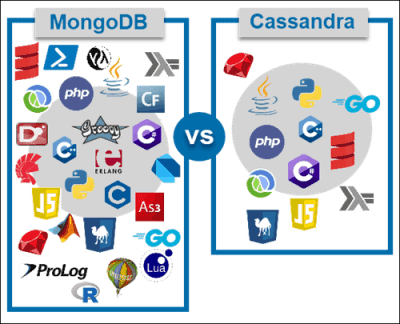
Conclusion: The choice of programming language comes down to your experience, project requirements (i.e., amount of data and types of queries) and available frameworks. Generally, both MongoDB and Cassandra support a wide range of programming languages. It is believed that MongoDB works best with Node.js, but it is very difficult to single out a particular programming language.
Aggregation
Deciding between MongoDB or Cassandra may also come down to whether or not you want a built-in aggregation framework.
MongoDB has a built-in aggregation framework. This feature allows it to retrieve data by utilizing an ELT multi-stage pipeline to transform the documents into aggregated results. However, such a framework is only efficient when working with small or medium-sized data traffic.
Cassandra has no aggregation framework and requires external tools like Hadoop, Spark and others.
Conclusion: An in-house aggregation framework can only be found in MongoDB. If you are expecting small or medium-sized data traffic and do not want to involve external tools, MongoDB has the upper hand in this regard.
Schema
When it comes to the schema, you should decide whether you want a flexible database or a stationary one.
MongoDB is a database that does not require a schema, naturally making it more adaptable to changes. In its prior versions, the default configuration did not enforce any schema at all. Today, you can decide whether you want a schema or not. Such flexibility means the database can input documents of different structures and interpret them once in the software.
Cassandra is a much more stationary database. It facilitates static typing and demands the categorization and definition of columns beforehand.
Conclusion: If you need flexibility in terms of schema, MongoDB would probably suit you better. On the other hand, Cassandra should be sufficient if you are not expecting too much deviation in the data structure.
Secondary Indexes
The quality of secondary indexes determines how efficiently you can access records in the database. The extent to which these indexes are supported is not the same in MongoDB and Cassandra.
MongoDB has high-quality secondary indexes. Due to its flexible data model and secondary indexes, it can access any property of a stored object (even when it is nested).
Alternatively, Cassandra only has cursor support for the secondary index. Its queries are limited to single columns and equality comparisons.
Conclusion: The decision between the two depends on how you will query. If it is mostly by the primary index, Cassandra will do the job. If you need a flexible model with efficient secondary indexes, MongoDB would be a better solution.
Performance
There are a number of factors that impact the performance of these two types of databases.
Mainly, the database model (or schema) makes a big difference in performance quality as some are more suitable for MongoDB while others may work better with Cassandra.
What’s more, the load characteristic of the application your database needs to support also plays a crucial role. If you are expecting heavy load input, Cassandra, with its multiple master nodes, will give better results. With heavy load output both MongoDB and Cassandra will show good performance.
Finally, many consider MongoDB to have the upper hand when it comes to consistency requirements. Still, this may vary depending on the application. Also, you can manually configure Cassandra to meet the consistency standards you set.
Conclusion
After reading this article, you should have a better understanding of the difference between Cassandra and MongoDB. Ultimately, the decision between these two NoSQL databases will depend on your needs and the model your application requires.




